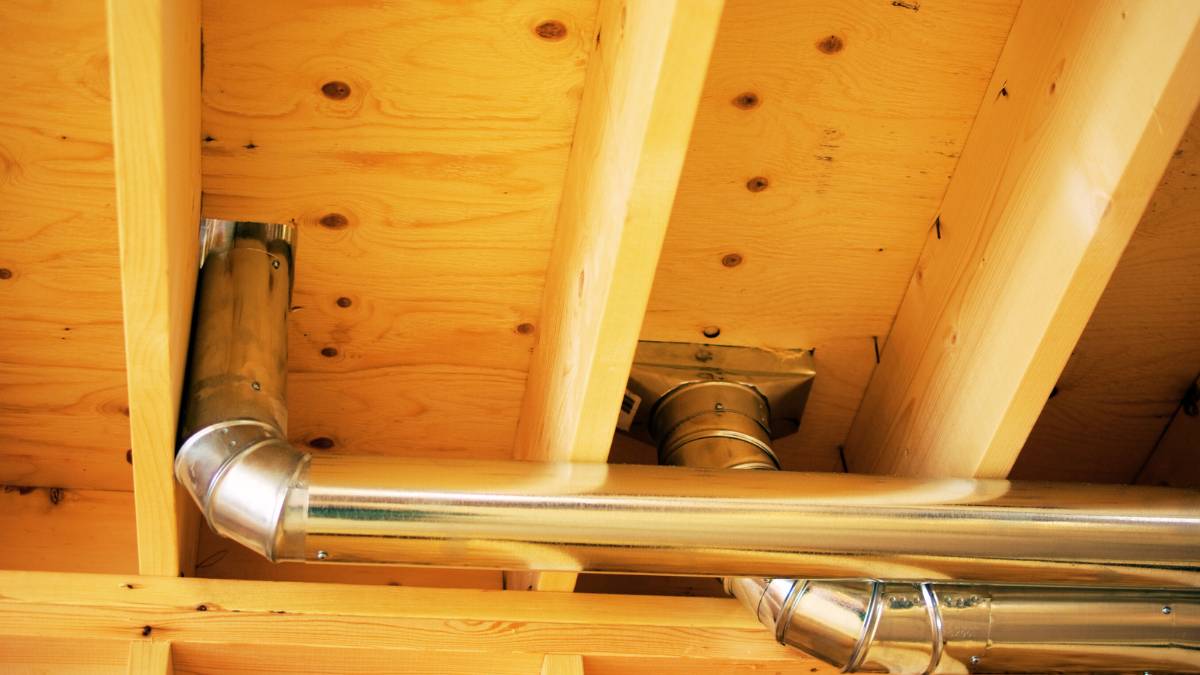Last Updated on June 7, 2024 by Kravelv Spiegel
Water dripping from ductwork in your basement can be a concerning and persistent issue. Not only does it signal potential problems with your HVAC system, but it can also lead to more serious issues such as mold growth, structural damage, and increased energy bills. This comprehensive guide aims to explore the causes, solutions, and preventive measures to address water dripping from ductwork in your basement effectively.
Key Takeaways:
- Water dripping from ductwork in basements is often caused by condensation, poor insulation, leaking air ducts, and clogged drain lines.
- Solutions include improving insulation, using dehumidifiers, maintaining the HVAC system, and regulating temperatures.
- Preventive measures involve regular inspections, maintaining optimal basement environment, sealing basement cracks, and ensuring proper HVAC system sizing.
- Routine HVAC maintenance is crucial for preventing moisture issues and ensuring system efficiency.
Causes of Water Dripping from Ductwork
Condensation:
Humidity: High humidity levels in the basement can lead to condensation forming on the ductwork. When warm, moist air comes into contact with the cool surface of the ducts, it condenses into water droplets.
Temperature Differentials: In summer, cool air running through the ducts can cause the external surfaces of the ductwork to be significantly cooler than the ambient basement temperature, resulting in condensation.
Poor Insulation:
Inadequate or damaged insulation around the ductwork can lead to temperature discrepancies, causing condensation. Insulation is supposed to prevent the cool air inside the ducts from affecting the temperature on the outside.
Leaking Air Ducts:
Holes, gaps, or leaks in the ductwork can cause cool air to escape, leading to localized areas of coldness which can attract condensation from the surrounding humid air.
Clogged Drain Lines:
The HVAC system’s drain lines, responsible for removing condensation from the air conditioning process, can become clogged. This causes water to back up and potentially leak into the ductwork or overflow into the basement.
Inadequate Ventilation:
Poor ventilation in the basement can exacerbate humidity levels, leading to more condensation on duct surfaces.
Solutions to Water Dripping from Ductwork
- Improve Insulation:
- Wrap Ductwork: Use high-quality insulation material to wrap the ductwork. This will help maintain a consistent temperature on the duct surface, reducing condensation.
- Seal Leaks: Apply mastic sealant or metal tape to seal any gaps, holes, or joints in the ductwork to prevent cool air from leaking out.
- Dehumidification:
- Install a Dehumidifier: Place a dehumidifier in the basement to control humidity levels. This will reduce the amount of moisture in the air, minimizing condensation on the ductwork.
- Ventilation Improvements: Enhance the ventilation in the basement by installing exhaust fans or increasing air circulation to keep humidity levels in check.
- Maintain HVAC System:
- Regular Cleaning: Ensure that the HVAC system, especially the drain lines, is regularly cleaned and maintained. This helps prevent clogs and ensures efficient removal of condensation.
- Check and Repair Drain Lines: Inspect the HVAC drain lines for any signs of blockages or damage and repair or replace as necessary.
- Temperature Regulation:
- Adjust Thermostat Settings: Set the thermostat to a temperature that avoids extreme cooling, which can lead to excessive condensation.
- Programmable Thermostats: Use programmable thermostats to maintain more consistent temperatures, reducing the likelihood of condensation.
- Use Vapor Barriers:
- Install Vapor Barriers: Place vapor barriers on the walls and floors of the basement to prevent moisture from seeping into the basement and increasing humidity levels.
Prevention Tips
- Regular Inspections:
- Conduct regular inspections of your ductwork and HVAC system to identify and address potential issues before they escalate.
- Maintain Basement Environment:
- Keep the basement well-ventilated and consider using a basement dehumidifier to maintain optimal humidity levels.
- Seal Basement Cracks:
- Seal any cracks or openings in the basement walls and floors to prevent moisture ingress which can increase humidity levels.
- Proper HVAC System Sizing:
- Ensure your HVAC system is appropriately sized for your home. An oversized or undersized system can lead to inefficient operation and increased condensation.
- Routine HVAC Maintenance:
- Schedule annual maintenance for your HVAC system, including ductwork inspection, cleaning, and servicing of the drain lines and other components.
Frequently Asked Questions
What causes water to drip from ductwork in the basement?
Water dripping from ductwork in the basement is commonly caused by condensation, poor insulation, leaking air ducts, and clogged drain lines.
How can I prevent condensation on my basement ductwork?
Prevent condensation by improving ductwork insulation, using a dehumidifier, maintaining proper ventilation, and ensuring your HVAC system is regularly serviced.
What should I do if I notice water dripping from my ductwork?
If you notice water dripping from your ductwork, inspect for leaks, improve insulation, clean and maintain the HVAC system, and consider using a dehumidifier to control basement humidity.
Final words
Water dripping from ductwork in your basement is a common but manageable issue. Understanding the causes, such as condensation, poor insulation, and clogged drain lines, is the first step in addressing the problem. Implementing solutions like improving insulation, using dehumidifiers, and maintaining the HVAC system can significantly reduce or eliminate the issue. Regular inspections and preventive measures will ensure a dry, mold-free basement and a more efficient HVAC system. By taking these steps, homeowners can protect their property and ensure a comfortable living environment.

